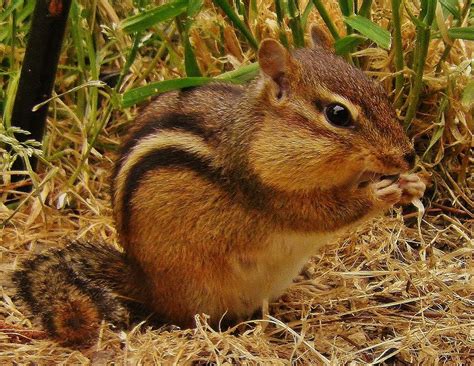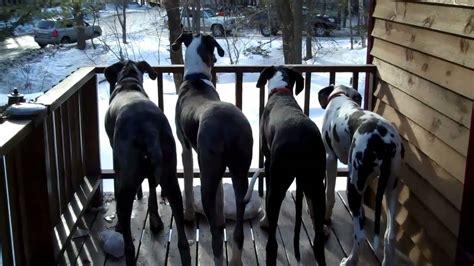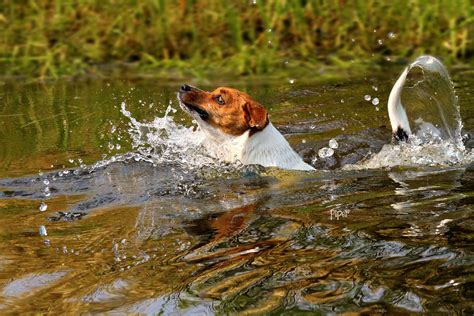
A tabby cat named Monk, boasting unusually large and adorably “chipmunk-like” cheeks, has captivated the internet, prompting a wave of adoration and sparking debate over the authenticity of the feline’s distinctive features. Social media users are questioning whether Monk’s puffed cheeks are natural or the result of digital manipulation, with many expressing skepticism while simultaneously falling in love with the cat’s unique appearance.
Monk, a rescue cat with a history of feline calicivirus, lives with his owners, Nicole Rienzie and her husband, Michael, in New York. Rienzie, adamant about the authenticity of Monk’s cheeks, has addressed the online speculation, assuring followers that Monk’s appearance is entirely natural, a result of his bone structure and not due to any medical condition or alteration. She said in an interview, “People think we’ve done something to his cheeks, but we haven’t. His cheeks are just naturally big.”
The viral sensation highlights the internet’s fascination with unique animal features and the inherent skepticism surrounding online content. While some remain unconvinced, Monk’s undeniable charm continues to win hearts worldwide.
The Rise of Monk: From Rescue Cat to Internet Sensation
Monk’s journey from a rescued feline to a viral phenomenon began when Nicole Rienzie and her husband, Michael, adopted him. His past battle with feline calicivirus, a common upper respiratory infection in cats, didn’t deter the couple. Little did they know that Monk’s distinctive facial features would catapult him to internet stardom. Rienzie regularly shares photos and videos of Monk on social media platforms, showcasing his daily life and endearing personality. It was these posts that initially drew attention to Monk’s remarkably chubby cheeks.
The initial reactions were a mix of amusement and disbelief. Many users commented on the cat’s resemblance to a chipmunk storing food, while others questioned whether the photos and videos were digitally altered to exaggerate Monk’s cheeks. The debate quickly spread across various social media platforms, fueling Monk’s rise to internet fame. Despite the skepticism, the overwhelming sentiment was one of affection and admiration for the uniquely adorable cat.
Rienzie has consistently addressed the concerns about the authenticity of Monk’s cheeks, stating unequivocally that they are entirely natural. She explained that Monk’s bone structure contributes to his distinctive appearance, emphasizing that no medical procedures or digital enhancements have been used. To further dispel doubts, she often posts videos of Monk from different angles, showcasing the natural movement and texture of his cheeks.
The Science Behind the “Chipmunk Cheeks”: Understanding Feline Anatomy
While Monk’s cheeks appear unusually large, understanding feline anatomy can shed light on the possible reasons behind his distinctive features. Cats have facial muscles and fat pads that contribute to the shape and appearance of their faces. The size and distribution of these fat pads can vary significantly between individual cats, leading to differences in cheek size and prominence.
Certain breeds of cats, such as Persians and British Shorthairs, are known for their round faces and chubby cheeks. However, Monk is a tabby cat, suggesting that his cheek size is not necessarily related to breed-specific traits. Genetic variations and individual differences in bone structure and muscle development could also play a role in Monk’s unique appearance.
Veterinarians consulted on this matter have generally agreed that Monk’s cheeks do not appear to be indicative of any underlying medical condition. They have suggested that his facial features are likely a natural variation within the feline population. However, they also emphasize the importance of regular veterinary checkups to monitor any potential health concerns.
The Skepticism and the Allure: Why Monk’s Cheeks Spark Debate
The internet’s reaction to Monk’s cheeks highlights the inherent skepticism that often accompanies viral content. In an age of advanced digital manipulation, it’s understandable that many users question the authenticity of online images and videos. The ease with which photos and videos can be altered has led to a growing awareness of the potential for misinformation and deception.
However, the skepticism surrounding Monk’s cheeks also underscores the allure of the unusual and the adorable. People are naturally drawn to things that are unique and unexpected, and Monk’s distinctive appearance certainly fits that description. The cat’s chubby cheeks evoke feelings of warmth, comfort, and amusement, making him an instant favorite among internet users.
The debate over the authenticity of Monk’s cheeks has only served to amplify his popularity. Whether people believe his cheeks are real or not, they are captivated by his charm and endearing personality. Monk’s story is a testament to the power of the internet to transform ordinary animals into global sensations.
The Impact of Viral Fame: Navigating the Challenges and Opportunities
The sudden surge in popularity has brought both challenges and opportunities for Monk and his owners. On the one hand, the increased attention has allowed Rienzie to share her passion for animal rescue and promote the importance of adopting pets. She has used Monk’s platform to raise awareness about feline calicivirus and other common health issues in cats.
On the other hand, dealing with the constant scrutiny and skepticism can be overwhelming. Rienzie has had to repeatedly address the questions about Monk’s cheeks, defending their authenticity and reassuring concerned followers. She has also had to navigate the complexities of managing Monk’s online presence, ensuring that his privacy and well-being are protected.
Despite the challenges, Rienzie remains grateful for the opportunities that Monk’s fame has brought. She hopes that his story will inspire others to adopt rescue animals and appreciate the unique qualities that make each pet special. She adds, “Monk has brought so much joy to our lives, and we’re happy to share that joy with the world.”
The Broader Context: The Internet’s Obsession with Animals
Monk’s story is just one example of the internet’s ongoing obsession with animals. From Grumpy Cat to Lil Bub, numerous animals have achieved viral fame for their unique appearances or quirky personalities. These animals often become symbols of positivity and joy, offering a welcome distraction from the challenges of everyday life.
The internet provides a platform for animal lovers to connect and share their passion for pets. Social media platforms are filled with photos, videos, and stories of animals, creating a sense of community and shared appreciation. The viral fame of animals like Monk underscores the power of the internet to amplify these connections and celebrate the unique bond between humans and animals.
Animal welfare organizations have also benefited from the internet’s obsession with animals. Viral content featuring rescue animals can raise awareness about the importance of adoption and encourage people to support animal shelters and rescue groups. The internet has become a powerful tool for promoting animal welfare and advocating for the rights of animals.
Monk’s Future: What Lies Ahead for the Viral Sensation
As Monk’s popularity continues to grow, it remains to be seen what the future holds for the viral sensation. Rienzie plans to continue sharing photos and videos of Monk on social media, showcasing his daily life and interacting with his fans. She also hopes to use Monk’s platform to promote animal welfare and raise awareness about important issues affecting cats.
Monk’s story is a reminder that even the most ordinary animals can become extraordinary with the help of the internet. His unique appearance and endearing personality have captured the hearts of people around the world, proving that sometimes, all it takes is a little bit of “chipmunk cheek” to achieve internet fame.
Expert Opinions on Monk’s Uniqueness
Several veterinarians and animal experts have weighed in on Monk’s peculiar facial features, contributing to the understanding of his unique case. Dr. Emily Carter, a veterinarian with 15 years of experience, noted, “While unusually prominent, Monk’s cheeks don’t present any immediate red flags for underlying medical issues based on the available visual information. His overall demeanor in the videos appears healthy, active and playful, which is a good sign. However, a hands-on examination would be required to definitively rule out any potential problems.”
Dr. Carter further elaborated on possible contributing factors, stating, “Genetics can play a significant role in the development of certain facial features. Similar to how certain dog breeds have characteristic head shapes, individual cats can exhibit unique traits that set them apart. In Monk’s case, it’s possible that a combination of genetic factors has resulted in the increased prominence of his buccal fat pads or the underlying musculature.”
Animal behaviorist Sarah Jenkins added a behavioral perspective to the discussion. “The attention Monk receives due to his unique look likely reinforces positive social interactions for him. Animals are highly perceptive to human reactions, and if Monk senses affection and amusement directed toward him, it could strengthen his bond with his owners and further solidify his comfort in front of the camera.”
Debunking Common Misconceptions
The viral nature of Monk’s photos and videos has also given rise to several misconceptions and rumors regarding his condition. One common misconception is that Monk suffers from a medical condition that causes his cheeks to swell. Rienzie has repeatedly debunked this claim, emphasizing that Monk has been thoroughly examined by veterinarians and found to be healthy.
Another misconception is that Monk’s cheeks are the result of overfeeding or weight gain. While it is true that obesity can affect the appearance of a cat’s face, Rienzie has stated that Monk is fed a balanced diet and maintains a healthy weight. His cheeks are simply a natural feature of his appearance, not a sign of unhealthy habits.
Some internet users have also speculated that Monk’s cheeks are the result of dental problems or impacted salivary glands. Veterinarians have confirmed that Monk’s dental health is good and that there is no evidence of any issues with his salivary glands. The most plausible explanation for Monk’s cheeks is a combination of genetic factors, bone structure, and individual variations in facial anatomy.
The Psychology of Internet Fame and Pet Obsession
The phenomenon of Monk’s viral fame touches upon broader psychological themes related to internet culture and human-animal interaction. Dr. Linda Simon, a psychologist specializing in human-animal bonds, explained, “The internet provides a unique platform for individuals to project their emotions and desires onto animals. Pets, especially those with unusual or endearing features, can become vessels for affection, comfort, and even humor. In a world often characterized by stress and uncertainty, the simple joy of viewing an adorable animal can provide a much-needed emotional boost.”
Dr. Simon further noted the potential for parasocial relationships to develop between internet users and animal celebrities. “Parasocial relationships occur when individuals form one-sided emotional connections with media personalities or fictional characters. In the case of animal celebrities like Monk, viewers may feel a sense of connection and affection toward the animal, even though they have never met him in person. These relationships can provide a sense of social connection and emotional support, particularly for individuals who may be isolated or lonely.”
The act of sharing and consuming animal-related content on the internet also taps into our innate biophilia, or love of nature and living things. “Humans have an evolutionary predisposition to connect with nature and other living organisms,” Dr. Simon explained. “Viewing images and videos of animals can activate this biophilic response, leading to feelings of happiness, relaxation, and connection to the natural world.”
The Economic Impact of Viral Pet Sensations
Beyond the social and emotional aspects, the viral fame of animals like Monk can also have significant economic implications. Rienzie has managed to leverage Monk’s online presence to generate income through merchandise sales, collaborations with pet-related businesses, and advertising revenue. The economic potential of viral pet sensations has not gone unnoticed by marketers and entrepreneurs, who are increasingly seeking to capitalize on the popularity of these animals.
Pet product companies often seek endorsements from animal celebrities to promote their products and reach a wider audience. Brands that align with the animal’s image and values can benefit from the increased exposure and positive associations. The economic impact can extend to local businesses as well, as tourists and fans may visit the animal’s hometown or patronize businesses associated with the animal.
Responsible Pet Ownership in the Age of Social Media
As more and more pet owners turn to social media to share their animals’ lives, it is crucial to consider the ethical implications and responsibilities involved. While sharing photos and videos of pets can be a source of joy and connection, it is important to prioritize the animal’s well-being and privacy.
Veterinarian Dr. Mark Thompson emphasizes the importance of informed consent when sharing information about a pet’s medical condition. “While it is commendable to raise awareness about animal health issues, pet owners should be mindful of sharing sensitive medical information without consulting with their veterinarian. It is also important to avoid self-diagnosing or administering treatments based on information found online, as this can be harmful to the animal.”
Ethical considerations also extend to the use of animals in advertising and marketing. Pet owners should carefully vet any commercial opportunities to ensure that the animal is not exploited or subjected to undue stress. It is also important to avoid perpetuating harmful stereotypes or promoting unrealistic expectations about pet ownership.
The Future of Animal-Human Interaction in the Digital Age
Monk’s story provides a glimpse into the evolving landscape of animal-human interaction in the digital age. As technology continues to advance, we can expect to see even more innovative ways for humans and animals to connect and communicate. The internet has already revolutionized the way we share information, connect with others, and express our love for animals. As we move forward, it is crucial to prioritize ethical considerations and responsible pet ownership in this ever-changing digital landscape.
The Significance of Rescuing Animals
Monk’s origin as a rescue cat underscores a vital narrative that resonates with many: the importance of animal rescue. Millions of animals await loving homes in shelters and rescue organizations, each with a unique story and personality, often overlooked. Rienzie’s choice to adopt Monk, despite his history with feline calicivirus, highlights the compassion and commitment involved in giving a deserving animal a second chance at life.
Rescue animals often come with unknown backgrounds, and potential owners may face challenges such as medical conditions, behavioral issues, or socialization difficulties. However, the rewards of rescuing an animal far outweigh the challenges. Rescue animals are often incredibly grateful for the love and care they receive, forming deep bonds with their owners.
Furthermore, adopting from shelters and rescue organizations helps to reduce the number of animals euthanized due to overcrowding. It also supports the efforts of these organizations to provide care, shelter, and medical treatment to animals in need. By choosing to adopt, individuals can make a tangible difference in the lives of animals and contribute to a more compassionate society.
Frequently Asked Questions (FAQ) About Monk the Cat:
1. Are Monk’s chipmunk cheeks real, or are they photoshopped?
Monk’s owner, Nicole Rienzie, has consistently stated that his cheeks are entirely natural and not the result of any digital manipulation. She attributes his unique appearance to his bone structure and natural variations in feline anatomy. While some skepticism remains online, she often posts videos from multiple angles to showcase the authenticity of his cheeks.
2. Does Monk have any health problems that cause his cheeks to be so large?
According to Rienzie, Monk has been thoroughly examined by veterinarians and is in good health. His cheeks are not caused by any underlying medical condition, such as dental problems, impacted salivary glands, or an infection. He does have a history of feline calicivirus, but that is unrelated to his cheek size.
3. What breed is Monk? Is cheek size common in that breed?
Monk is a tabby cat, and his cheek size is not a common trait associated with tabby cats. While some breeds, such as Persians and British Shorthairs, are known for having round faces, Monk’s distinctive cheeks are likely due to individual genetic variations and bone structure rather than breed characteristics.
4. How did Monk become famous on the internet?
Monk’s fame began when his owner, Nicole Rienzie, started posting photos and videos of him on social media platforms. His unusually large and adorable cheeks quickly attracted attention and sparked a debate about their authenticity. The combination of his unique appearance and Rienzie’s engaging content helped him gain a large following.
5. How has Monk’s fame affected his life and the lives of his owners?
Monk’s fame has brought both challenges and opportunities. Rienzie has used his platform to promote animal rescue and raise awareness about feline calicivirus. However, she has also had to deal with constant skepticism and scrutiny about his appearance. Overall, she is grateful for the positive impact Monk has had on her life and the lives of others. The economic impact from viral fame allowed the family to partner with different businesses and make a difference in animals’ lives.









